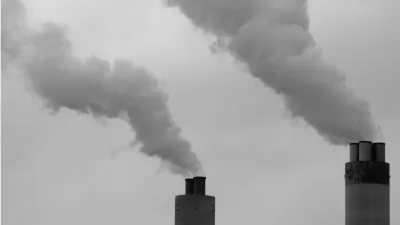The first four months of 2012 saw 'energy-related, CO2 emissions' drop to levels not seen since 1992, according to the EIA. Graphs show an 18% decrease in carbon emissions from coal, with lesser amounts from natural gas and petroleum from a year ago
Plummeting use of coal for power generation as many of the nation's coal power plants either shuttered or were converted to natural gas contributed greatly to the historic drop in the first quarter tabulations by the Energy Information Administration, (EIA) - "the energy department's statistics arm."
"Energy-related carbon emissions fell 8 percent from the same period a year ago to 1.134 billion metric tons (1.25 billion tons), according to the latest monthly energy review by the Energy Information Administration
Emissions from coal use fell sharply by 18 percent to 387 million tonnes in the January-March 2012 period - the lowest-first quarter tally since 1983 and the lowest for any quarter since April-June 1986."
While the other two fossil fuels saw nothing like an 18% decrease, they did, nonetheless, contribute to the 8% total decline.
The EIA news report provides graphs for coal, natural gas (down 2.8%), and petroleum (down 2.7%).
EIA largely attributes the total 8% decrease to three factors:
- A mild winter that reduced household heating demand and therefore energy use
- A decline in coal-fired electricity generation, due largely to historically low natural gas prices
- Reduced gasoline demand
In his July 21 column, "There's Still Hope for the Planet", NYT Washington bureau chief David Leonhardt refers to the drop in carbon emissions resulting from the transition from coal to natural gas as a "success" that illustrates an 'alternative' route to climate stabilization.
"The successes make it possible at least to fathom a transition to clean energy that does not involve putting a price on carbon - either through a carbon tax or a cap-and-trade program that requires licenses for emissions."
Contributor's note: EIA uses the term, "energy-related carbon dioxide emissions". It does not use the term 'carbon dioxide equivalents that I believe would take into account the methane leakage associated from natural gas production and consumption. I hope to add clarification.
Thanks to California League of Conservation Voters
FULL STORY: U.S. CO2 emissions fall to lowest first-quarter level in 20 years: EIA

Planetizen Federal Action Tracker
A weekly monitor of how Trump’s orders and actions are impacting planners and planning in America.

Maui's Vacation Rental Debate Turns Ugly
Verbal attacks, misinformation campaigns and fistfights plague a high-stakes debate to convert thousands of vacation rentals into long-term housing.

San Francisco Suspends Traffic Calming Amidst Record Deaths
Citing “a challenging fiscal landscape,” the city will cease the program on the heels of 42 traffic deaths, including 24 pedestrians.

Amtrak Rolls Out New Orleans to Alabama “Mardi Gras” Train
The new service will operate morning and evening departures between Mobile and New Orleans.

The Subversive Car-Free Guide to Trump's Great American Road Trip
Car-free ways to access Chicagoland’s best tourist attractions.

San Antonio and Austin are Fusing Into one Massive Megaregion
The region spanning the two central Texas cities is growing fast, posing challenges for local infrastructure and water supplies.
Urban Design for Planners 1: Software Tools
This six-course series explores essential urban design concepts using open source software and equips planners with the tools they need to participate fully in the urban design process.
Planning for Universal Design
Learn the tools for implementing Universal Design in planning regulations.
Heyer Gruel & Associates PA
JM Goldson LLC
Custer County Colorado
City of Camden Redevelopment Agency
City of Astoria
Transportation Research & Education Center (TREC) at Portland State University
Jefferson Parish Government
Camden Redevelopment Agency
City of Claremont





























